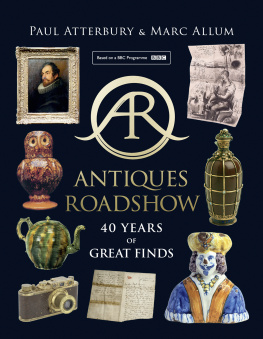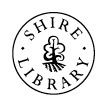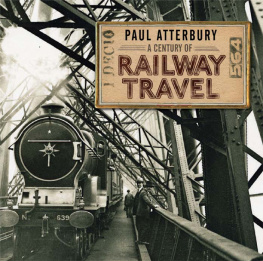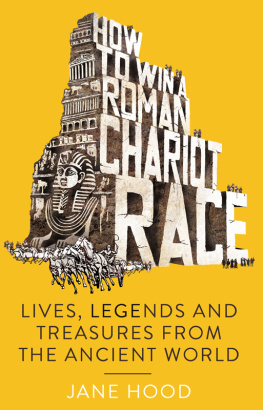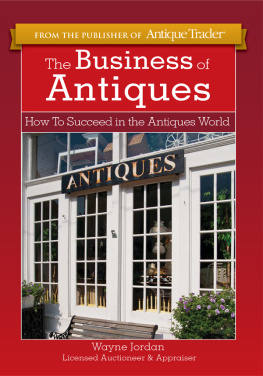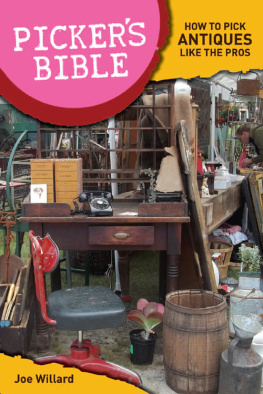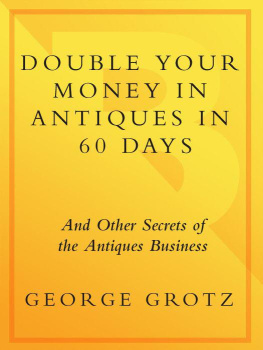William Collins
An imprint of HarperCollinsPublishers
1 London Bridge Street
London SE1 9GF
WilliamCollinsBooks.com
This eBook edition published by William Collins in 2017
Text Paul Atterbury and Marc Allum, 2017
Photographs BBC except for those individually listed in the Picture Credits
Design and layout HarperCollins Publishers 2017
By arrangement with the BBC.
The BBC logo is a trademark of the British Broadcasting Corporation and is used under licence.
BBC logo BBC 1996
The authors assert their moral right to be identified as the authors of this work.
Cover photographs: left second from top: Courtesy of The Potteries Museum & Art Gallery, Stoke-on-Trent; bottom right, bottom middle: Courtesy of Homes & Antiques/Homesandantiques.com; right middle: Clive Corless for Homes & Antiques/Homesandantiques.com; top left: Jeff Overs for BBC; top right The Henry Moore Foundation. All Rights Reserved, DACS/www.henry-moore.org; left third from top BBC/Sothebys London
A catalogue record for this book is available from the British Library.
All rights reserved under International and Pan-American Copyright Conventions. By payment of the required fees, you have been granted the non-exclusive, non-transferable right to access and read the text of this eBook on-screen. No part of this text may be reproduced, transmitted, downloaded, decompiled, reverse engineered, or stored in or introduced into any information storage and retrieval system, in any form or by any means, whether electronic or mechanical, now known or hereinafter invented, without the express written permission of HarperCollins Publishers.
Source ISBN: 9780008267636
eBook Edition October 2017 ISBN: 9780008267650
Version: 2017-10-27
CONTENTS

Familiar Roadshow faces, as they were. CLOCKWISE: David Battie, Eric Knowles, Lars Tharp and Henry Sandon.
On 17 May 1977, a group of antiques experts and a BBC production team came together in Herefords town hall to make a pilot programme for a possible new series, to be called the Antiques Roadshow. The idea was simple. Members of the public would be encouraged to bring their own objects for identification, discussion and valuation to a team of experts assembled for the purpose in a large public space, with television crews standing by to film the best bits. On paper, it seemed like a good idea, but no one knew on that May morning whether it would work or not.
The inspiration had come from one of the regular valuation days organised by auction houses, whereby members of the public could bring things along for a free valuation, as a means of generating business. One such occasion was visited by a production team from BBC Bristol, and the idea of developing it into a public event that could also be
a television programme was born. At the planning stage, advice was sought from Sothebys by BBC Bristol. For the programme, however, there was to be no commercial agenda.
A PROGRAMME IS COMMISSIONED
Plans were drawn up, Hereford town hall and the expert team were booked, and the event was widely publicised, with the offer of free transport for large pieces of furniture and other items that could not easily be carried by their owners.
A programme about antiques was not a new idea for the BBC. Talking about Antiques, a radio programme presented by Bernard Price, had enjoyed long-lasting success in the 1960s. In 1965 Going for a Song, presented by Max Robertson and, later, Collectors World, first broadcast in 1970 and presented by Hugh Scully, brought antiques successfully onto the television screen. All these programmes generated a large mailbox from listeners and viewers keen to find out about their own objects, and so a programme designed to help those people do just that was considered to stand a good chance of success. Thus, the pilot for the Antiques Roadshow was commissioned.
A key figure was, of course, Arthur Negus. After a long and successful career as a valuer and furniture expert with a Gloucestershire firm of auctioneers, Arthur started a new life as a television personality at the age of 62, when he joined the panel of experts on Going for a Song. He was an immediate success, thanks to his relaxed manner and West Country accent, and quickly became the face of antiques on television. Needless to say, Arthur Negus was at the heart of the team of experts assembled by the BBC for the Antiques Roadshow pilot, although it is important to remember that he was never the programmes presenter.

At Castle Howard in July 2017, to mark the Roadshows 40th anniversary, a special guest was Bruce Parker, the shows first presenter, seen here with Fiona Bruce.

Angela Rippon, the presenter for the Roadshows second and third series, with Arthur Negus, the programmes most famous expert in the early days.
On that May day in Hereford, the Roadshow quickly developed the winning formula, format, shape and style that it was broadly to follow for the next forty years. In a programme nominally about objects and their values, it soon became apparent that it could also be about their owners. As Hugh Scully once said: The programme is a cameo of the British character and its foibles, idiosyncrasies and eccentricities. It is the people that we most readily remember. They are the Antiques Roadshow. They give it the colour, charm, interest, anecdote and humour that delight us on Sunday evenings. We enjoy their happiness. We share their hopes. We feel their disappointments.

In 1996 the Roadshow was awarded a BAFTA, the Lew Grade Award for a Significant and Popular Television Programme. Hugh Scully and Christopher Lewis, Executive Producer at the time, show off the award.
Pilot programmes are rarely transmitted, but that first experimental show at Hereford went so well that it was included in the first series, once it had been commissioned. Between April and August 1978, the Roadshow visited Bedworth, Yeovil, Newbury, Northallerton, Buxton, Perth and Mold, setting a pattern, and a geographical spread, that has remained much the same ever since. As the Roadshows popularity grew, so more filming locations were steadily added. By 1986 it had risen to twelve and by 1997 to twenty five, with a filming season that ran from 16 April 1997 to 19 March 1998. The next series started filming just over a month later, on 23 April 1998. More recently, the Roadshows filming schedule has settled at twelve episodes each year, but with two programmes being made at each location. Also consistent has been the programmes popularity and, forty years on from that day in Hereford, the

